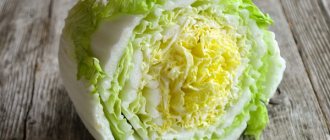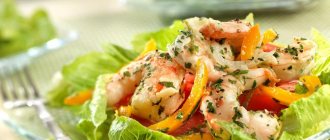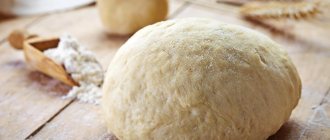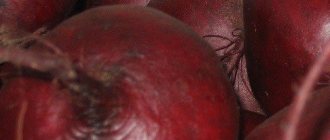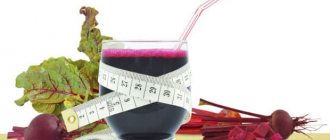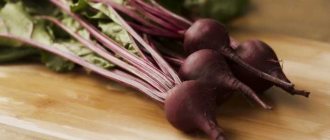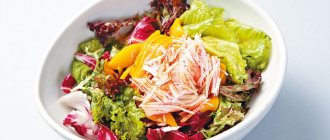Beets are an extremely healthy root vegetable . It contains a significant amount of vitamin and mineral compounds. Regular consumption of it will provide the body with the substances necessary for an active lifestyle.
Beetroot salad is the optimal dish for those who want to get an attractive figure and keep in shape, and adherents of proper nutrition (PN). It contains all the beneficial substances found in the vegetable, and the right combination with other ingredients will make the salad not only tasty, but also even more healthy.
Calorie content of beets per 100 grams
Since beet contains a small amount of carbohydrates and fats, the calorie content of this root vegetable is low. However, it still differs depending on the form in which you consume the vegetable. We invite you to consider the calorie content of beet juice, as well as beetroot in fresh, boiled, baked, stewed and pickled form
In the fresh
Raw beets have a beneficial effect on the digestive and circulatory systems of the body. The product must be present on the menu of vegetarians and people who are diligently fighting excess weight. Buryak is a dietary vegetable, the consumption of which will never make you gain weight. The average root crop weighs 300-400 grams. Accordingly, its energy value reaches approximately 130-170 kcal.
The calorie content of raw beets is 43 kilocalories per 100 grams.
Boiled
The calorie content of boiled beets is low, so nutritionists recommend including them in the diet. Boiled vegetables have a wide range of beneficial properties. Vitamins and other valuable elements present in the product improve brain activity, strengthen the immune system, and improve intestinal motility.
- Steamed beets: 44 kcal;
- Beetroot with mayonnaise and garlic: 112 kcal;
- With butter and garlic: 95 kcal;
- With sour cream (15%) and garlic: 65 kcal.
It is important to cook beets correctly. Firstly, the vegetable is already placed in boiling water. Secondly, it does not salt. Salt makes beets hard. It is better to add it to an already prepared dish. During the boiling process, make sure that the liquid completely covers the beets. To make it easier to clean boiled beets, place them in cold water immediately after boiling. You shouldn’t pour out the broth itself: by straining it, you will get a useful diuretic and laxative. Beetroot broth is good for the liver - it effectively cleanses this organ. The beetroot is cooked for 40-60 minutes, depending on the size of the root vegetable.
Boiled beet – 48 kilocalories per 100 grams.
Baked
Boiled beets are included in dozens of salads, but few housewives know that it is better not to boil beetroot for them, but to bake it. It takes the same amount of time, but is much more convenient and tastier. Heat treatment does not reduce the benefits of beetroot.
Rules for preparing baked beets:
- We wash the vegetables well.
- We cut off only the long tails.
- Spread the foil on the table and place the beet on top.
- We wrap the vegetable so that all the “seams” are directed upwards. You can be sure that the juice released during the baking process will not escape anywhere. Small beets can be wrapped in one piece of foil, 2-3 pieces at a time.
- We put the beet in the oven, preheated to 160-170 degrees, it cooks for about 1 hour.
- Let the vegetables cool, carefully unwrap them, and clean them.
The calorie content of baked beets is 44 kilocalories per 100 grams.
Stewed
To prepare stewed beets, the vegetable is washed under running water, peeled, cut into strips and placed in a frying pan or cauldron. Add 3-4 tablespoons of oil and a small amount of water. Mix everything and simmer until half cooked. Don't forget to stir the beet regularly. Add sugar and salt to taste. Simmer until done. When stewed, low-calorie beet turns into a nutritious product. If you stew beet in water, it will contain 75 kcal.
The energy value of baked beets is 106 kilocalories.
Pickled
Pickled beets are used as a component of various salads and first courses. By adding beets 5 minutes before the soup is ready, you will improve its appearance and taste. Pickled beetroot can be bought at the market or in any supermarket. However, a store-bought product cannot be compared in taste or benefits to one prepared at home.
To marinate beet at home, rinse the vegetable and cook until fully cooked. The marinade is made from water, vinegar, sugar, table salt, black pepper, chili pepper, horseradish, bay leaf and cloves. All this is brought to a boil and then cooled to room temperature. Boiled beets are peeled, cut in any way convenient for you, placed in sterilized jars and filled with cooled marinade. Place the bottles in a cool, dry place, and within 1-2 days the pickled beet will be ready for consumption.
What does the product go well with: selecting the ingredients
The root vegetable belongs to the group of easily combined ones. It harmonizes with:
- any vegetables;
- cottage cheese;
- cheeses;
- dried fruits;
- walnuts;
- pears;
- sour cream;
- vegetable oils;
- eggs;
- beef.
Although the vegetable goes well with these products, you can create your own combinations depending on your individual taste preferences. The main condition is that the dishes are dietary.
Composition and nutritional value
Beets are the champion among vegetables in terms of their content of essential acids, which include gamma-aminobutyric acid, which improves metabolism in the brain. Beet contains the compound betaine, which is converted inside the body into active choline, which has an anti-sclerotic effect and prevents fatty degeneration of the liver. Among other acids contained in beets, we highlight lactic, malic, oxalic, citric, tartaric and folic. Beets contain a lot of fiber, which improves the functioning of the gastrointestinal tract.
Table beet varieties are rich sources of vitamin C and B vitamins; the content of carotene and nicotinic acid is less significant. 100 grams of vegetables contain 14% of the body’s daily need for dietary fiber. Among the micro- and macroelements are manganese (16%), potassium (13%), copper (7.5%), sodium (6%), magnesium (5.8%), phosphorus (5%), iron (4. 4%), zinc (3%), calcium (1.6%) and sulfur (1.3).
Now let's talk about the components of the BJU. 100 grams of fresh beet contains 1.6 grams of vegetable proteins, 0.2 grams of fat and 6.8 grams of carbohydrates. In boiled beets their capacity is 1.7 g, 0.2 g and 8 g, respectively.
Beneficial properties of beets
Beets are well absorbed by the body and replenish the deficiency of nutrients and vitamins, so they must be included in the diet in winter and spring. But its benefits don’t end there.
How beets affect the body:
- Buryak helps improve digestion and relieves chronic constipation.
- Fiber and valuable organic acids regulate the metabolic process and enhance intestinal motility.
- Pectin contained in beets removes waste and toxins from the body and destroys putrefactive bacteria present in the gastrointestinal tract.
- Consumption of low-calorie beets helps speed up weight loss and maintain the results.
- Betaine (a lipotropic substance) prevents the accumulation of fats in liver tissues and reduces the likelihood of tumors.
- Beetroot juice normalizes blood pressure, protects against atherosclerosis, and lowers cholesterol levels. It is useful to mix the drink with honey.
- Buryak cleanses the blood, increases hemoglobin and improves heart function (due to the content of vitamin B9).
- Beets stimulate brain function by activating blood circulation in the head.
- Fresh beet juice is good to drink in the early stages of colds. For a runny nose, drop 2-3 drops of this liquid into the nostrils. And for a sore throat, gargle with a mixture of beet juice (1 glass) and vinegar (1 tablespoon).
- Antioxidants present in beet tone and slow down cellular aging.
- Folic acid has a rejuvenating effect by promoting the formation of new cells.
- Buryak increases the body's resistance to radioactive substances.
- Even beet leaves can be called healing. For headaches, they are applied to the temples, as well as to the forehead. Soon the migraine goes away.
Beetroot, or beetroot, is the second most popular vegetable, second only to potatoes. The sweetish root vegetable is used to prepare salads, first courses, drinks, snacks, winter preparations and even desserts. With proper storage and heat treatment, beets do not lose their beneficial properties. The vegetable has a beneficial effect on human health, primarily on the gastrointestinal tract.
WEIGHT LOSS STORIES OF STARS!
Irina Pegova shocked everyone with her weight loss recipe: “I lost 27 kg and continue to lose weight, I just brew it at night. » Read more >>
Raw, boiled and stewed beet practically does not differ in chemical composition. Experts have long proven that the product is useful in any form, because it is rich in natural substances vital for the normal functioning of all human organs and systems. The chemical composition of beets is presented in the table:
Component Group
Compound
A, B₁, B₂, B₃, B₅, B₆, B₉, C, RR
Micro- and macroelements
Calcium, magnesium, potassium, iron, zinc, phosphorus, iodine, sulfur, copper, cobalt
Apple, lemon, oxalic
Histidine, arginine, lysine, valine, betaine, betanin
Glucose, sucrose, fructose
Beets contain a large amount of fiber, dietary fiber, protein compounds and complex carbohydrates that are beneficial for the body. The nutritional and energy value of beet depends on the variety and method of processing. Nutritionists usually indicate average BJU indicators, since the ratio of nutrients in fresh and thermally processed root vegetables varies slightly:
The nutritional value
Indicators per 100 grams of product
Expert opinions on beets with proper nutrition
Experts speak positively about the use of root vegetables. However, the most important condition is the absence of contraindications to its consumption.
Albina Komisarova, professional nutritionist
Albina is professionally involved in weight loss and diet therapy. According to the expert, the root vegetable is an affordable and low-calorie source of vitamins and minerals. https://www.rbc.ua/rus/lite/eda/dostupno-polezno-dietolog-dala-sovety-pitatsya-1559392054.html
Sofia Rozhko, founder of theBODY school
She is a certified nutritionist – a specialist who deals with healthy eating issues. She recommends replacing lunch soup with beet salad. https://thepoint.rabota.ua/ofysnoe-menyu-10-pravyl-pytanyya-dlya-teh-kto-vechno-na-rabote-no-hochet-ostavatsya-v-forme/
Alla Pogozheva, Doctor of Medical Sciences
He is a leading researcher at the Federal Research Center for Nutrition and Biotechnology. The specialist points out the ability of beets to dilate blood vessels and lower blood pressure. https://aif.ru/food/products/polezno_li_pit_sveklu_mify_i_pravda_o_cennyh_svoystvah_soka
Nutritional value and calorie content
Calorie content per 100 grams of raw vegetable: 43 kcal.
| 1. | Squirrels | 1.6 g |
| 2. | Fats | 0.09 g |
| 3. | Carbohydrates | 8.9 g |
| 4. | Vitamin A | 33 IU |
| 5. | Vitamin C | 4.9 mg |
| 6. | Vitamin B6 | 0.1 mg |
| 7. | Vitamin B9 | 1, mg |
| 8. | Calcium | 16 mg |
| 9. | Iron | 0.8 mg |
| 10. | Magnesium | 23 mg |
| 11. | Sodium | 12 mg |
| 12. | Iodine | 19 mg |
| 13. | Water | 88 g |
| 14. | Alimentary fiber | 2.8 g |
Cooked beets contain slightly more calories than raw ones. There are 49 kcal per 100 grams of product. This is due to the fact that the beet fibers shrink at elevated temperatures and some of the water is lost.
The weight of the vegetable decreases, but the composition remains the same. This vegetable has a low protein content, there is no fat in it at all, but almost 10% carbohydrates. Heat treatment increases the amount of natural sugars. In other words, the glycemic index increases.
Boiled beets are used as food more often than raw beets. They prepare the well-known borscht soup from it, cut vinaigrettes, make “herring under a fur coat,” and preserve the preparations for the winter. It is good to use as a dietary product. The vegetable has a sufficient amount of carbohydrates and can easily replace fatty foods. It will relieve unwanted hunger and normalize intestinal function.
In what form is it best to consume: raw, boiled, baked
Raw beets are the most dietary product because they contain the fewest calories and the maximum number of nutrients. During culinary processing, not only some vitamins and minerals and amino acids are lost, but also the calorie content increases. However, raw root vegetables are not recommended for long-term nutrition. This is due not only to the high content of oxalic acid, but also to the load on the digestive tract and the likelihood of helminth infection.
When mixed in a salad with other vegetables or grated, the active effect of raw beets is reduced.
The benefits of beets, boiled and raw
Beets have a huge number of beneficial properties. Its composition will help maintain the daily norm of minerals and vitamins. Also, its use will help strengthen the immune system, which is very good during the cold season.
Beetroot improves hematopoietic function and the body's condition in case of iron deficiency anemia. It helps pregnant women not only in the development of the unborn baby, but also in coping with prolonged constipation that is characteristic of this period.
Raw vegetables are processed into beet juices and vegetable salads are prepared. Juices help preserve all the most beneficial elements of the vegetable. You need to drink this juice mixed with some other juice. This will smooth out the cloyingly sweet taste. When drinking juice, beneficial components penetrate the body faster.
- carbohydrates make up 10% of the total mass. They can be divided into glucose, sucrose and fructose. They participate in the metabolic processes of the body. They are broken down for energy, which is needed for vital activity;
- vitamins B and C. Vitamin C is responsible for immunity, so beets will help strengthen it. Folic acid improves fertility in men and women. Helps with the development of the nervous system in the fetus during pregnancy. Vitamin B6 helps cope with stress;
- mineral elements: potassium, manium, calcium, iron, manganese, sulfur, phosphorus, chlorine and others. They all participate in biochemical processes and play an important role in human life support;
- organic acids: oxalic, malic, citric. All three acids participate in the Krebs cycle, upon release from which glucose is formed, which is necessary to nourish the brain;
- amino acids: valine, arginine, histidine, betaine and others. They are components of proteins and are part of DNA;
- fiber (pectins) is contained in large quantities. It normalizes intestinal function. The human body does not have enzymes that can completely digest fiber. It swells in the stomach, which suppresses the feeling of hunger. Only its upper layers are digested, the remains are excreted from the body. Pectin also kills putrefactive bacteria in the gastrointestinal tract. Great for helping you lose weight.
The benefits and harms of beets on a diet and weight loss
Like any product, beets can bring both benefit and harm to the body. In order for the vegetable to be only useful, you should follow simple rules - do not eat it in moderation and if there are contraindications.

Benefits of beets for the body
Beetroot is a prime example of a vegetable with a very rich composition. Therefore, it is often a component of diet therapy and dietary nutrition in general. The vegetable is rich in:
- mono- and disaccharides;
- dietary fiber;
- starch;
- organic acids;
- beta-carotene.
In addition to the above substances, the root vegetable is rich in macro- and microelements. 100 grams (g) contain (in milligrams - mg):
- calcium – 37;
- magnesium – 22;
- chlorine – 43;
- sulfur – 7;
- phosphorus – 43;
- iodine – 0.007;
- sodium – 46;
- potassium – 288;
- copper – 0.14;
- manganese – 0.6;
- fluorine – 0.02;
- iron – 1.4;
- zinc – 0.4;
- boron – 0.28;
- nickel – 0.014;
- chromium – 0.02;
- rubidium – 0.45.
The product contains a whole amino acid complex, represented by histidine, betanine, arginine, etc. The root vegetable contains vitamins of groups B, A, PP, C and E. The latter has antioxidant abilities. Vitamin C not only has a positive effect on the immune system, but also improves metabolic processes.

Beets are a dietary product, so they can be consumed either raw or cooked. At the same time, you should not be afraid of eating too much, because 100 g of root vegetables contain:
- protein – 1.5 g;
- fat – 0.1 g;
- carbohydrates – 8.8 g.
The calorie content varies depending on the cooking method. So, 100 g of raw product contains 40 kilocalories (kcal), and the same amount of boiled beets already contains 49 kcal. When stewing, the calorie content increases to 109 kcal per 100 g of product, and the same amount of fried beets contains 85 kcal.
Attention! Those wishing to lose weight and maintain physical fitness are recommended to consume boiled or raw beets.
From a medical point of view, the positive effects of the product are expressed in:
- stimulation of hemoglobin production;
- stimulation of the formation of new cells;
- improving intestinal motility;
- acceleration of metabolic processes at the cellular level;
- ability to remove toxic substances from the body;
- stimulation of sexual activity in men;
- relief of pre- and menstrual pain in women;
- ability to lower blood pressure;
- laxative and diuretic effect;
- anti-inflammatory and analgesic effect;
- ability to increase endurance;
- strengthening the immune response.
Due to its high iodine content, beets are useful for people with thyroid problems.
When are beets harmful?
The root vegetable, when consumed in moderation, is not capable of causing harm. However, it can be harmful if you are overused with it or have diseases that are contraindications to consuming beets.
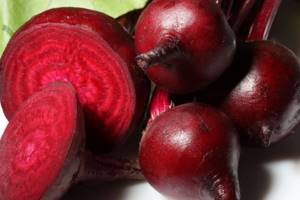
The vegetable is contraindicated for:
- Diabetes mellitus. Due to their high carbohydrate content, eating beets can be harmful to your health.
- Osteoporosis or predisposition to it. The vegetable contains substances that disrupt the absorption of calcium.
- Diarrhea. The harm is associated with the laxative effect of the vegetable.
- The presence of stones in the organs of the urinary system. This is due to the content of oxalic acid in the root vegetable, which can irritate the mucous membrane of the urinary tract.
- Gastritis or stomach ulcer. The condition may worsen due to the high content of acids and difficult-to-digest fiber.
- Increased acidity of gastric juice. Regardless of the cooking method, beets increase the acidity of gastric juice.
Important! If you suspect that there are contraindications to consuming beets, it is recommended that you consult your doctor.
Be sure to check out:
Dietary cabbage salad: the best recipes Safe cleansing: flax seeds for weight loss Kefir on a diet: are alternatives possible Competent castling: how to replace high-calorie treats and allergenic foods on a diet
List of unique properties of vegetables
- Laxative effect. Helps cope with long-term constipation, improve digestive function and cleanse toxins.
- Regulation of fat metabolism. Betaine in beets regulates fat metabolism.
- Reducing blood pressure in hypertension. It contains a large amount of magnesium, which strengthens the heart.
- Anti-inflammatory effect.
- Painkiller. It will not relieve severe pain, but it will help with bruises.
- Hematopoietic function. Iron is involved in the formation of red blood; beets contain a lot of it.
- Regulation of the endocrine system. The iodine contained in the vegetable helps with endocrine diseases.
- Energy function. The high carbohydrate content helps the body get maximum energy for life.
A nutritionist will tell you about the benefits of beets for humans:
Contraindications and harmful effects of root vegetables
- This product should not be abused if you have diabetes. Carbohydrates in the vegetable contribute to an increase in blood glucose;
- people suffering from intestinal diseases, such as enterocolitis, colitis, increased stomach acidity, gastroduodenitis, are at risk of developing diarrhea when consumed;
- beets promote salt formation, so in case of urolithiasis it is better to exclude them from the diet;
- If you are allergic to beets, you should not contact them or eat them. This can lead to serious consequences. Up to and including death.
Beetroot with garlic and mayonnaise
Since today we are talking about the calorie content of beets with garlic and mayonnaise, then for cooking you will need a boiled vegetable. This salad is a favorite appetizer for many, which always decorates the holiday table.
The recipe is very simple. To prepare, you will need boiled beets (250 grams), mayonnaise (45 grams), salt and pepper, and also a little chopped garlic to spice up the dish. Grind the beets on a fine grater, add spices and garlic. Then add a couple of spoons of mayonnaise. The dish is ready. Garnish it with a couple of bright green parsley leaves and you are ready to serve.
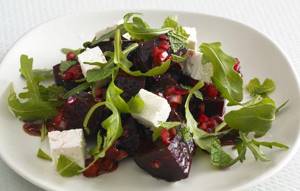
How to cook beets correctly
Root vegetables must be washed well from the soil. You can trim off the small roots a little, but you need to cook them unpeeled. Vegetables are poured with cold water, which should completely cover them. Place on the stove over high heat. Bring to a boil. Next, cook for 120-180 minutes over medium heat. Then add cold water and cool. Peel the beet skin before use.

There is another way. Boil the beets in water for 20 minutes. Then wrap in foil and bake in the oven for 80-100 minutes. Pre-wash.
Chefs in restaurants prefer the accelerated version. Vegetables are washed. Boil for 40 minutes. Fill with cold water and leave in it for 20 minutes. It is believed that during this time the beets will be fully cooked.
Interesting recipes
There are many recipes for vegetable salads made from beets. They will help you lose weight and maintain a toned figure. Below are the main ones.
Salad with carrots
| Calorie content per 100 grams | 61 kcal |
| Squirrels | 1.9 g |
| Fats | 2.7 g |
| Carbohydrates | 8.3 g |
The beets should be boiled, then peeled. Wash and peel the carrots. Grate the vegetables on a coarse grater. Transfer to a salad bowl. Add salt and spices to taste. You can season with mayonnaise or olive oil.
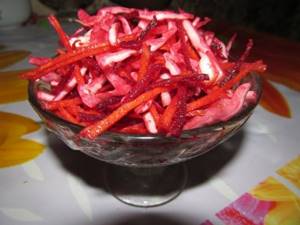
Salad with boiled beets and sour cream
| Calorie content per 100 grams | 56.4 kcal |
| Squirrels | 1.70g |
| Fats | 1.98 g |
| Carbohydrates | 8.56 g |
Boil the beets for 120-180 minutes. To peel. Cut into cubes or strips, as you like. Sprinkle chopped vegetables with lemon juice and add a little horseradish. Season with spices and add salt to taste. Add sour cream and stir. At the end you can sprinkle with grated walnuts. A perfect dish for fasting days.
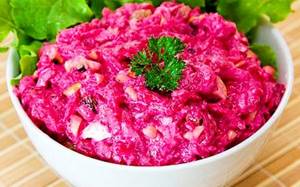
Salad with mayonnaise and garlic
| Calorie content per 100 grams | 114 kcal |
| Squirrels | 2.3 g |
| Fats | 7.2 g |
| Carbohydrates | 10.9 g |
Boil the beets, peel them. Grate on a coarse grater. Peel a few cloves of garlic and pass through a garlic press. You can just chop it finely. Season with mayonnaise.
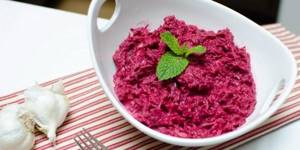
Boiled beet salad with vegetable oil
| Calorie content per 100 grams | 70.1 kcal |
| Squirrels | 1.8 g |
| Fats | 2.8 g |
| Carbohydrates | 10.5 g |
Grate the boiled and peeled beets on a coarse grater or cut into strips. Chop the greens. Add a teaspoon of balsamic vinegar or lemon juice. Season with spices, add salt. Fill with oil.

Fitness snack
| Calorie content per 100 grams | 108 kcal |
| Squirrels | 2.1 g |
| Fats | 4.5 g |
| Carbohydrates | 15.1 g |
Boil the beets. Clean. Cut into cubes or strips. Grate a large apple and add to the salad. Scald the onion with boiling water and cut into small cubes. Shred the cabbage. Add parsley, leeks, apple cider vinegar and olive oil. Spices and salt - optional.
Main conclusions
- beet salad is dietary due to its low calorie content and high content of vitamins, minerals and amino acids;
- beets go harmoniously with vegetables, cheeses, meat, cottage cheese, fruits;
- The least amount of calories is found in raw vegetables, and a little more in boiled vegetables.
Despite all the benefits of the root vegetable, it can cause harm to the body if there are contraindications. Therefore, if they are present or suspected, it is recommended to consult a doctor.
How do you feel about eating beetroot salads when losing weight and maintaining proper nutrition? Share your favorite recipes with our readers.


